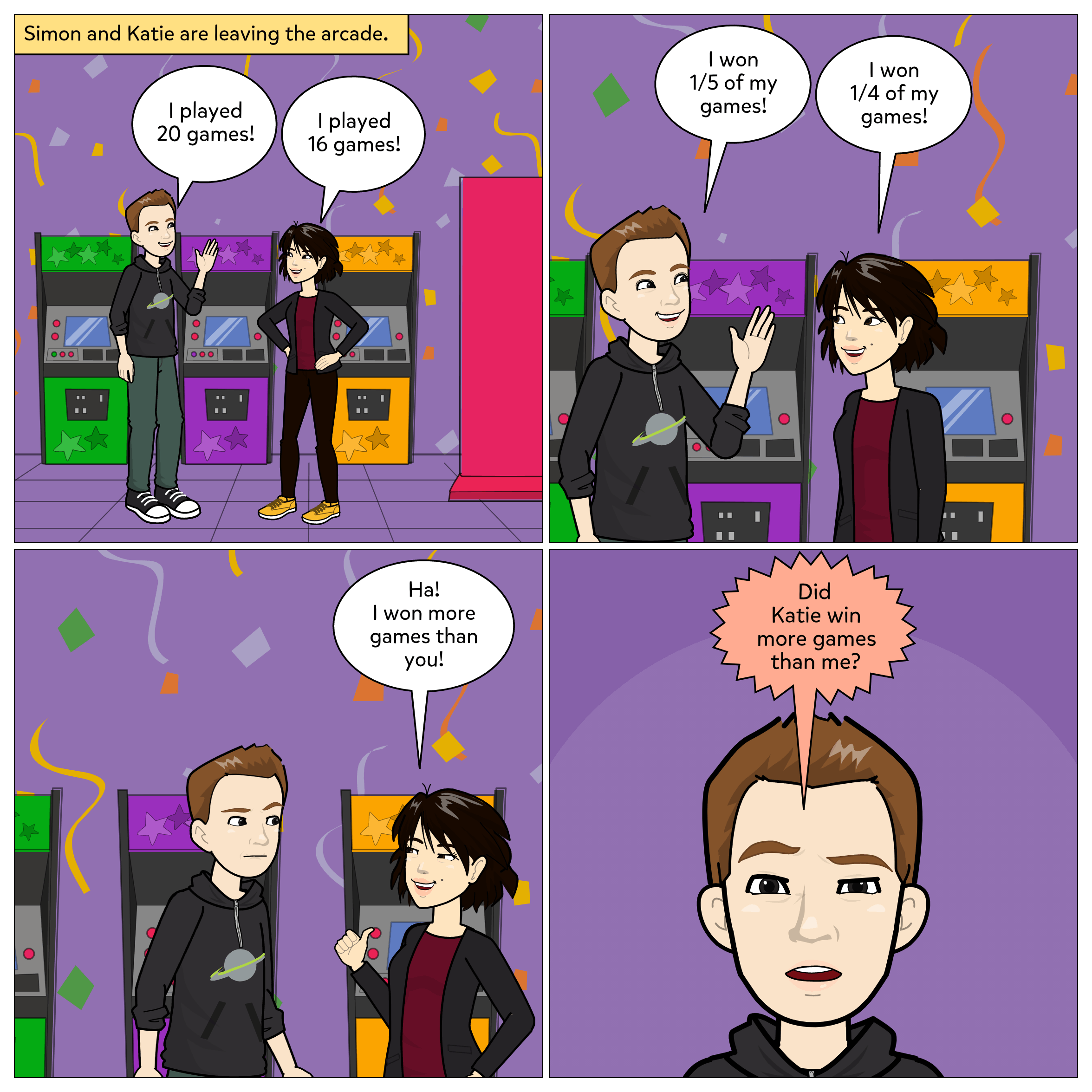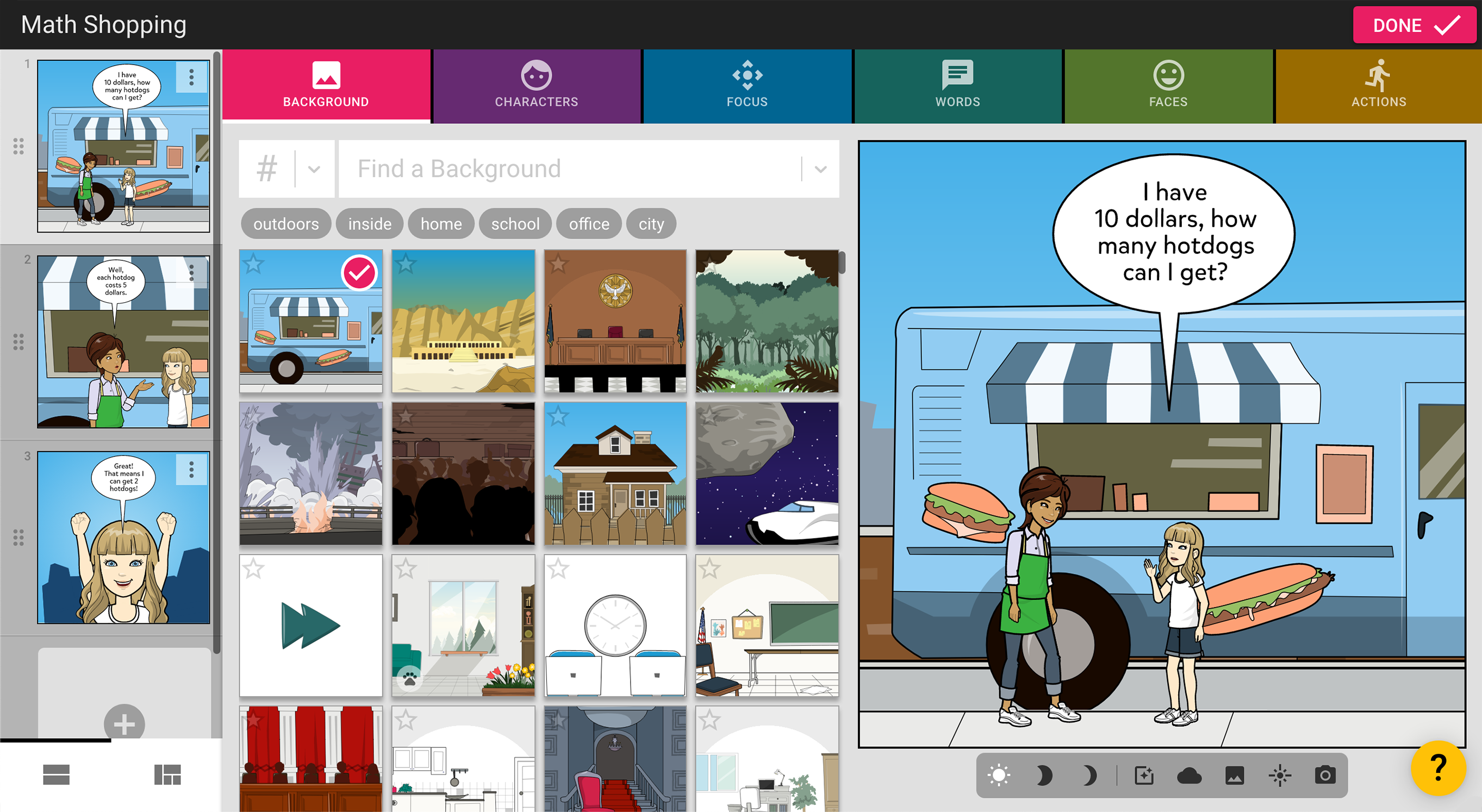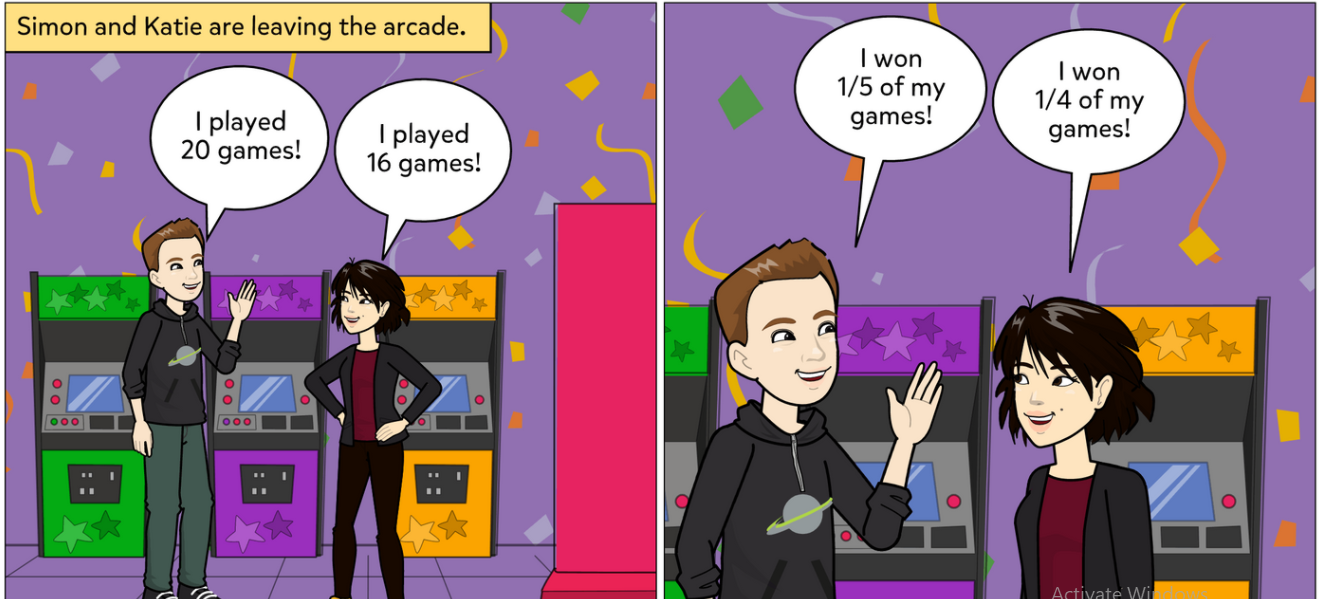Elementary students may struggle with the wording of problems, and the visual supports of comics can help them focus on the math.
When assigned math word problems, students often groan and complain. They may try to start solving without making sense of the problem first, or rely on clue words rather than mathematical reasoning. The word problems don’t draw them to engage with the math.
What’s a teacher to do? A common tip to boost engagement is to connect course content to students’ interests. Since I knew that comics, graphic novels, manga, and anime are among my students’ favorite media, I decided to try to capitalize on that enthusiasm by transforming lifeless word problems into comics with built-in reading supports.
HELPING STUDENTS VISUALIZE A PROBLEM’S CONTEXT
When students need help with word problems, my first question is, “What is happening in the problem?” In my experience, they’re often unable to fully retell the story of the problem, indicating a lack of comprehension, so before we can discuss the math involved, I must help students understand what is going on.
This used to be a very frustrating process in which I would act out the problem, sketch it, or read it sentence by sentence with pauses to check for understanding.
Then I thought about how graphic novels and comics are used across content areas to support struggling readers and make difficult concepts easier to understand. I realized that I could format problems as comics to help focus instruction on classifying, modeling, and solving problems rather than teaching clue words to overcome comprehension problems.
Pictures and supportive features in graphic novels and comics assist students in visualizing text containing challenging or unfamiliar vocabulary, settings, or situations. Comic style formatting has the added benefit of chunking information into distinct visual frames. This makes information easier to remember, calls attention to separate events, and highlights the passage of time.
Here’s a problem from New York State’s Grade 5 Mathematics Modules: “Mark breaks up a 9-hour drive into 3 segments. He drives 2 1/2 hours before stopping for lunch. After driving some more, he stops for gas. If the second segment of his drive was 1 2/3 hours longer than the first segment, how long did he drive after stopping for gas?”
The wording of this problem may be difficult for students who struggle with reading comprehension. Students may not know what a segment is or how it relates to the stops for lunch or gas. I formatted a similar problem as a comic to support student understanding by visually separating the drive into segments.
BOOSTING ENGAGEMENT BY BOOSTING COMPREHENSION
Reading comprehension is tied to motivation: We’re more apt to understand what we read when we’re motivated to read it. Unfortunately, word problems are not a particularly engaging media.
Engagement is also tied to feelings of competence, and students may avoid tasks they anticipate failing at. A recent activity I assigned contained one traditional word problem and two comic word problems, and I noticed that a student skipped over the word problem to do the other two. When I asked her about this, she said the traditional problem looked “harder.” Comics are less intimidating to struggling readers, making them more likely to be read and reread as needed.
Here’s another word problem, also from NY State’s Grade 5 Mathematics Modules: “DeAngelo needs 100 lb of garden soil to landscape a building. In the company’s storage area, he finds 2 cases holding 24 3/4 lb of garden soil each, and a third case holding 19 3/8 lb. How much gardening soil does DeAngelo still need in order to do the job?”
Most students cannot relate to the need to landscape a building, limiting their use of background knowledge to make sense of the problem. Students may not be familiar with what it means to landscape, how to visualize a company’s storage unit, or what is meant by a “case” of soil. A cursory reading may cause students to omit the second case of soil.

Rewriting this problem as a comic allowed me to change the context from an adult needing to landscape a building to a tween building a jump to practice his motocross skills. Instead of a brief, stand-alone narrative requiring students to visualize a situation unrelated to their lives, I gave them a relatable narrative in a visual format they associate with enjoyment and one they fully expect to understand.
CREATING COMICS IS SURPRISINGLY EASY
I wanted to present word problems visually for some time but struggled with how to do so effectively until I read an article in The New York Times about creating digital comics. I learned about Pixton, a largely drag-and-drop program that allows users with no artistic talent to create professional-looking comics in a matter of minutes. (Pixton charges a subscription fee.)

The first step to creating a comic problem using Pixton is to select a background. Then I choose from a bank of characters, and adjust their coloring, hairstyle, clothing, and stance using a menu of options. Next I add information using captions and speech bubbles. I can add more visuals by importing this file into Canva, which has a substantial collection of clipart. The whole process can take as little as 10 minutes, but the payoff in engagement is huge.
Like Dorothy landing in Oz, comic formatting transforms traditional black-and-white word problems from tasks to be avoided into colorful, engaging, and accessible narratives that beg to be solved.

